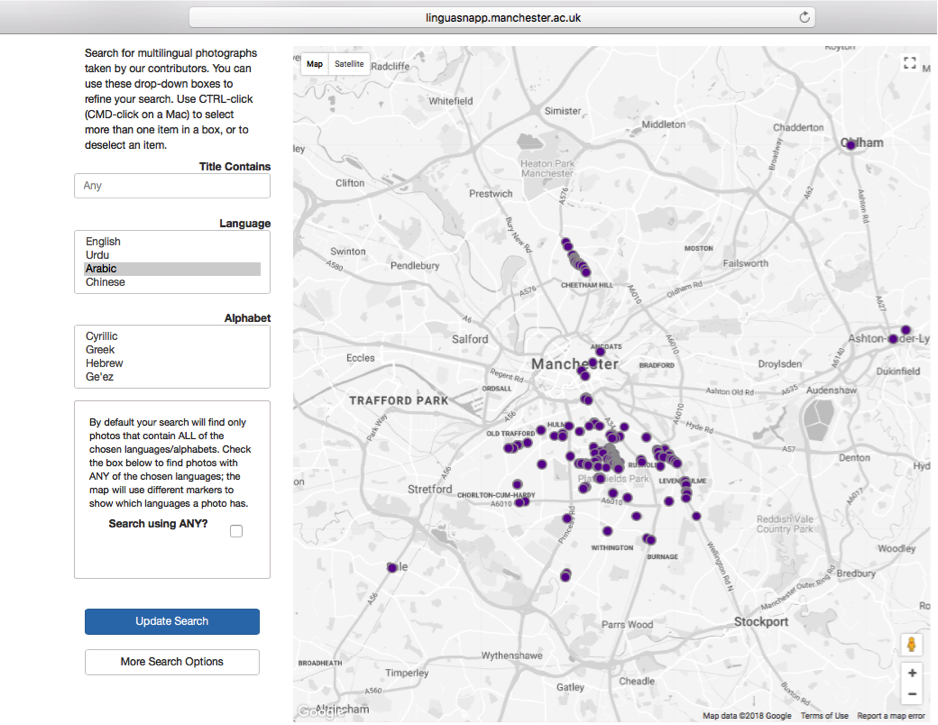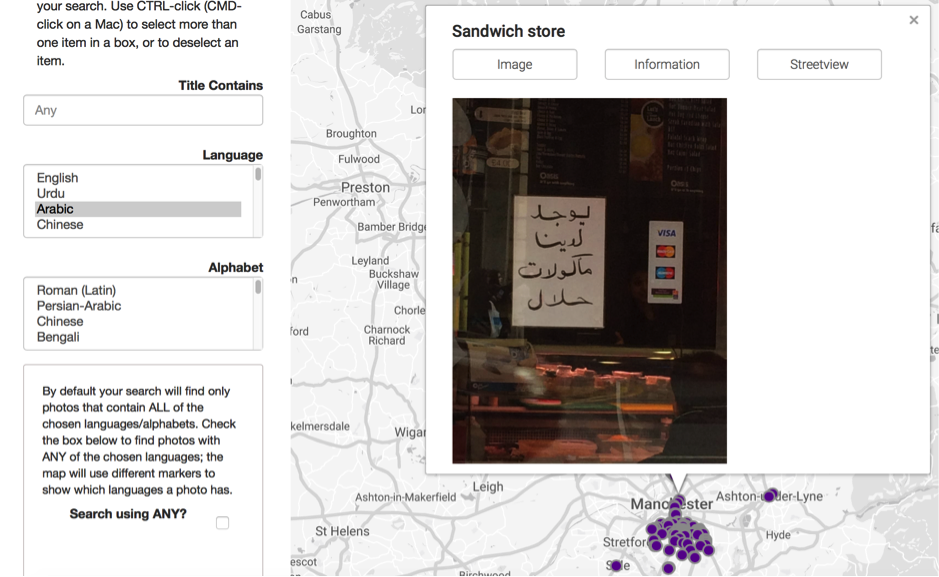Arabic in Linguistic Landscapes
Arabic has a growing presence in Manchester’s language landscapes. It is one of the most frequently encountered languages on public signs, alongside Urdu and Chinese. It is used on shop signs and billboards, posters, product labels, handwritten notes and noticeboards, and more. This shows the growing importance of Arabic in the city’s commercial sector, in retail and services, as well as its religious significance in Muslim communities.
The use of Arabic on signs is an indication of the importance that many residents of Arabic speaking attribute to their community heritage, and of the links that they maintain across different neighbourhoods. It is a testimony to the entrepreneurial nature of many recent immigrants and of their rapid integration into the city’s social and economic fabric. It also shows how well established immigrants use Arabic to help those who have arrived more recently to adjust to their new environment.
Arabic is visible across Manchester, especially in areas where many residents are speakers of Arabic. It has a strong presence in Rusholme, Levenshulme, Longsight and Cheetham Hill. Arabic is often used alongside other community languages such as Sorani Kurdish and Somali, reflecting the multilingual traditions of these communities. Quranic Arabic verses often decorate shop fronts across Manchester’s Muslim communities.
Arabic on Linguasnapp
To get a picture of public signage in Arabic in Manchester, you can consult our online resource LinguaSnapp.
How to use the interactive LinguaSnapp map
You can search for Arabic signs by selecting Arabic from the ‘Language’ box on the left and then clicking ‘Update search’. Then click individual icons on the map to see images and accompanying information. There are search options that can be used to refine your search, allowing you to focus on the use of Arabic in particular outlets, in combination with other specified languages, in a particular kind of display, etc.
You can also compare the distribution of Arabic with that of other languages. To do that, tick the box on the left ‘Search using ANY?’, and select (using CTRL- click, or CMD-click on a Mac) the languages from the language menu, followed by ‘Update search’. You will then see the languages colour coded on the map.


